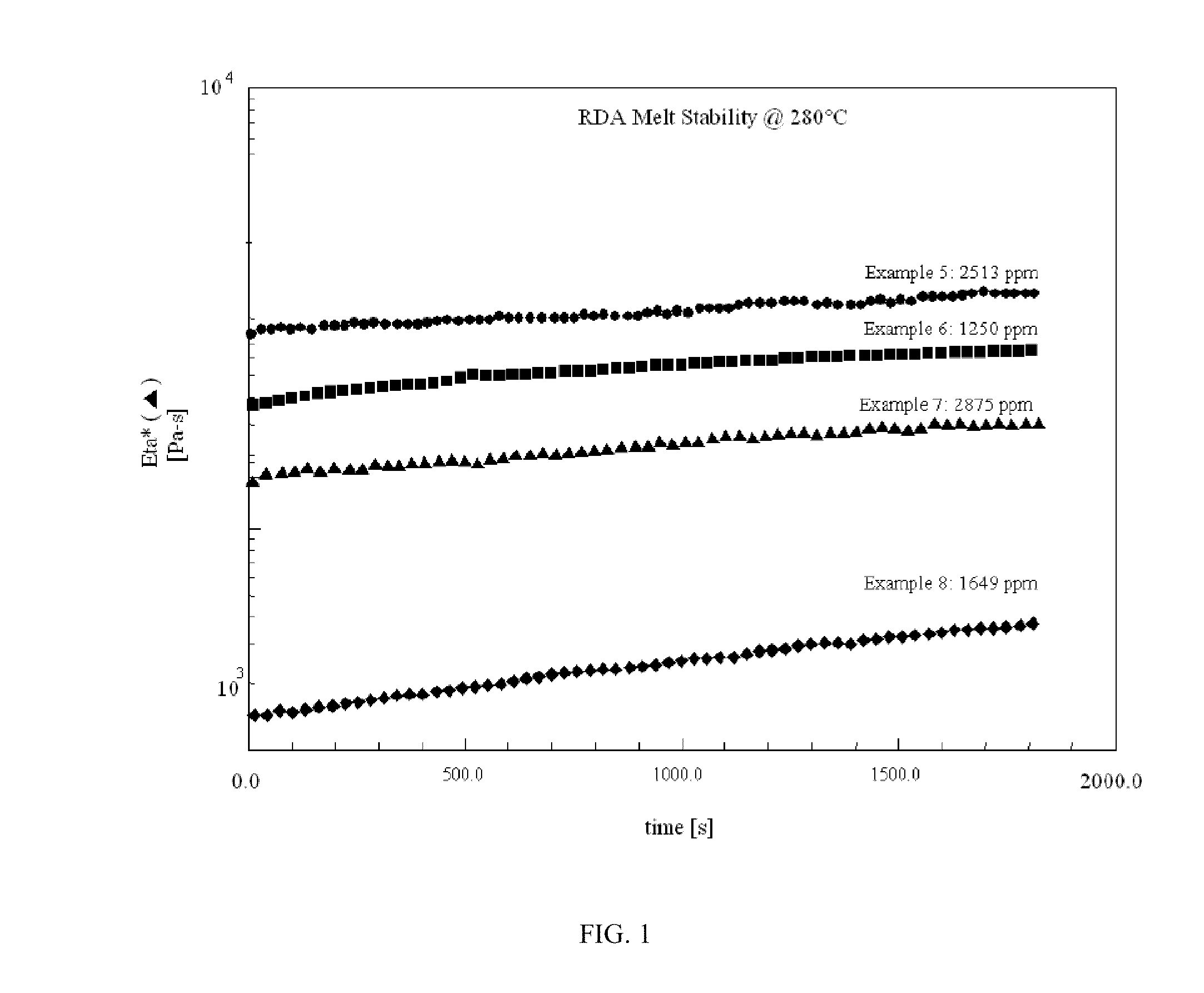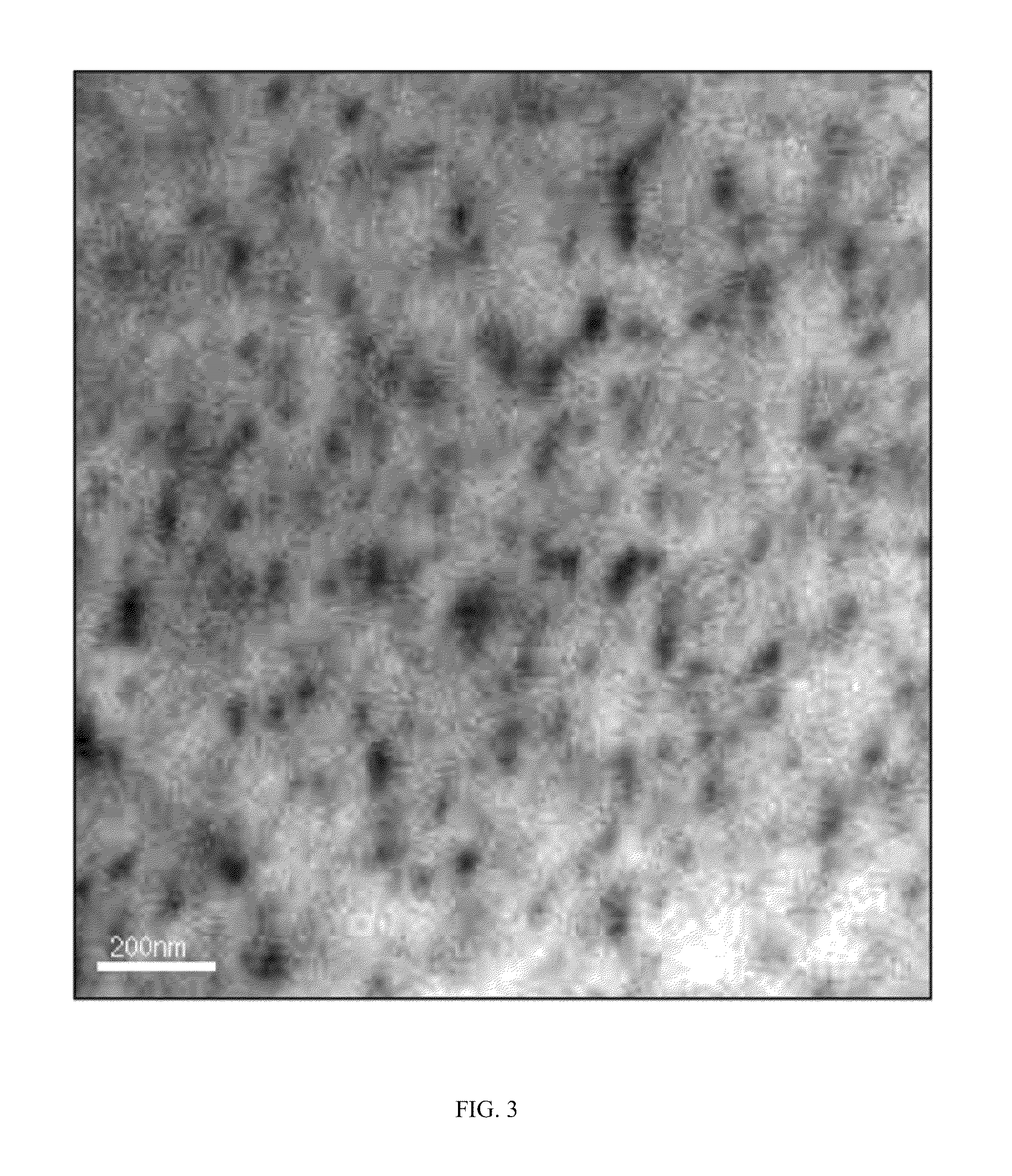Methods for the preparation of a poly(arylene ether) polysiloxane multiblock copolymer, multiblock copolymers produced thereby, and associated compositions and articles
a polysiloxane and multi-block technology, applied in the field of methods for the preparation of poly (arylene ether) polysiloxane multi-block copolymer, multi-block copolymer produced thereby, can solve the problems of poor melt processability, inferior heat resistance, flame retardancy, smoke generation, etc., and achieve the effect of reducing the number of polymers, and improving the stability of the composition
- Summary
- Abstract
- Description
- Claims
- Application Information
AI Technical Summary
Benefits of technology
Problems solved by technology
Method used
Image
Examples
embodiment 1
[0093]A method of preparing a poly(arylene ether)-polysiloxane multiblock copolymer, comprising: reacting a hydroxy-diterminated poly(arylene ether), a hydroxyaryl-diterminated polysiloxane, and an aromatic diacid chloride to form a poly(arylene ether)-polysiloxane multiblock copolymer.
embodiment 2
[0094]The method of embodiment 1, wherein the hydroxy-diterminated poly(arylene ether) has an intrinsic viscosity of about 0.04 to about 0.2 deciliter per gram as measured at 25° C. in chloroform.
embodiment 3
[0095]The method of embodiment 1 or 2, wherein the hydroxy-diterminated poly(arylene ether) has the structure
wherein x and y are each independently 0 to about 100, provided that the sum of x and y is at least 2; each occurrence of Q1 is independent selected from the group consisting of halogen, C1-C12 hydrocarbylthio, C1-C12 hydrocarbyloxy, C2-C12 halohydrocarbyloxy wherein at least two carbon atoms separate the halogen and oxygen atoms, and unsubstituted or substituted C1-C12 hydrocarbyl provided that the hydrocarbyl group is not tertiary hydrocarbyl; each occurrence of Q2 is independently selected from the group consisting of hydrogen, halogen, C1-C12 hydrocarbylthio, C1-C12 hydrocarbyloxy, C2-C12 halohydrocarbyloxy wherein at least two carbon atoms separate the halogen and oxygen atoms, and unsubstituted or substituted C1-C12 hydrocarbyl provided that the hydrocarbyl group is not tertiary hydrocarbyl; and L has the structure
wherein each occurrence of R1 and R2 is independently se...
PUM
| Property | Measurement | Unit |
|---|---|---|
| molecular weight | aaaaa | aaaaa |
| particle size | aaaaa | aaaaa |
| mole ratio | aaaaa | aaaaa |
Abstract
Description
Claims
Application Information
 Login to View More
Login to View More - R&D
- Intellectual Property
- Life Sciences
- Materials
- Tech Scout
- Unparalleled Data Quality
- Higher Quality Content
- 60% Fewer Hallucinations
Browse by: Latest US Patents, China's latest patents, Technical Efficacy Thesaurus, Application Domain, Technology Topic, Popular Technical Reports.
© 2025 PatSnap. All rights reserved.Legal|Privacy policy|Modern Slavery Act Transparency Statement|Sitemap|About US| Contact US: help@patsnap.com



